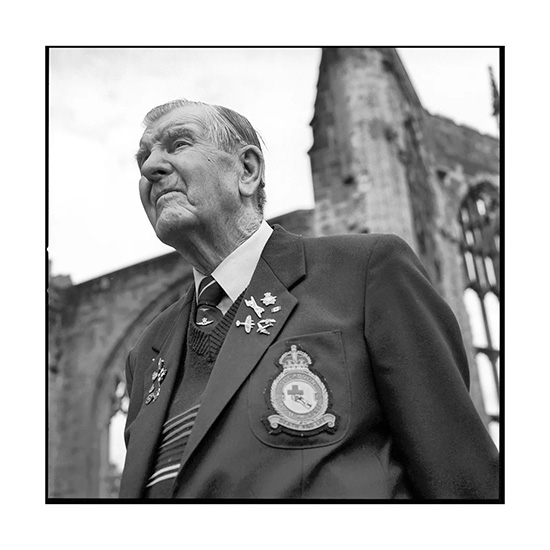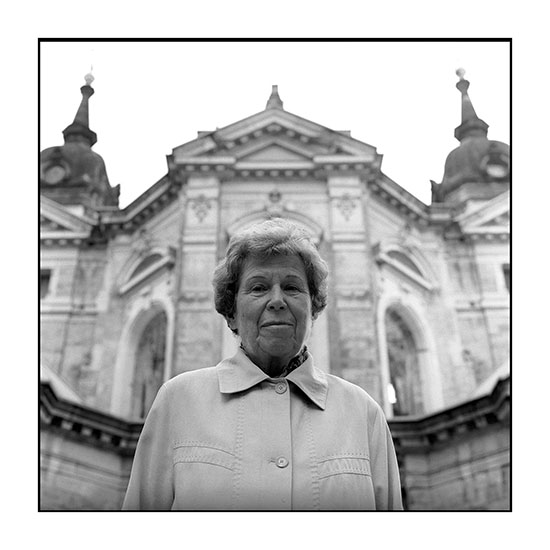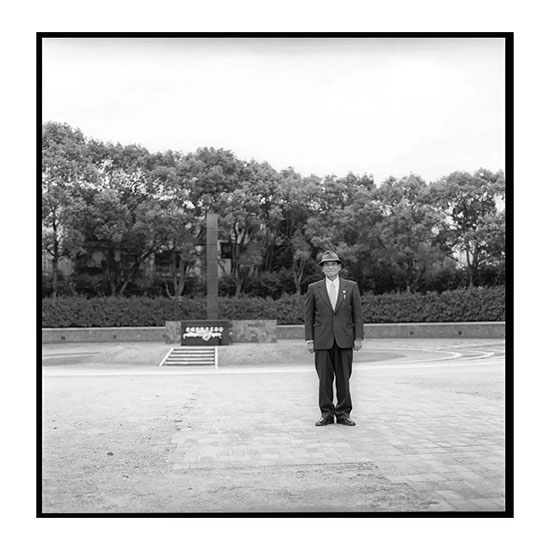
“To see the searchlights sweeping the sky, hearing the loud noise of exploding bombs and the fires- it was like a great big barn fire. Because you were occupied, you didn’t have time to be afraid. Until 70 years after, I wonder how did I do that? It took courage, but it had to be done.
On the night of November 14th, 1940 I was an Air Raid Precautions messenger in Coventry. After midnight, the Germans started dropping canisters of incendiaries. When the canisters got to a certain height all the small incendiary bombs would fall. They would aim for the roofs of houses so that when the incendiary landed on the roof, the house would burn. The burning houses lit up the target area to make the factories visible which was what they were after. We were going around to put these incendiary bombs out. But the Germans knew and put an explosive cap on the tail of some. Our warden was injured while trying to extinguish a bomb. Suddenly it exploded and threw hot metal into his face and hands. His clothes were on fire.
Someone had to get an ambulance for the warden. I told the deputy that I would take my bike- but she said “No, I have children your age. It’s too dangerous at the height oft he blitz!” I told her, “This is my job! I’m going!” I got on my bike and rode towards the center of the city. The sky was glowing and there were flames, sparks and smoke all over. Big shards of red hot shrapnel and ammunition were falling around me because whatever the anti-aircraft guns shot up had to come down when the shells burst. When I got near the city center, houses and shops were burning and at the end of Spon Street there was a huge crater 30 yards deep. Through the flames I could see water at the bottom of the crater because the River Sherbourne goes under the city. I had to cross the crater to get to Broadgate. Fortunately there was two feet of pavement and a wall on my right that didn’t fall into the crater. With my tin hat and gas mask, I carried the bike on my shoulder and edged my way along the wall until I got to the other side. I couldn’t ride my bike further because there was rubble and glass sprune all over. As I went up a narrow road there was a shopping arcade with a glass roof. Heat and flames were shooting out of it and the whole thing collapsed with a big roar of broken glass. When I got to Broadgate, in front of me was the Council House and across the road an incendiary had just landed on the cycle shop. Outside there was a fireman with a blackened face, he stood there holding his hose with just a trickle of water coming out because all the water mains were damaged.”
-Alan Hartley, Coventry blitz survivor
The British city of Coventry was bombed several times during the Second World War by the German Luftwaffe. The most devastating of those attacks came on the evening of November 14th 1940. During “Operation Moonlight Sonata”, high explosive, incendiary and landmine bombs cascaded upon the city. When the fires smoldered the majority of the city lay in ruin – the city center and more than 4,000 homes were destroyed. The raid had resulted in such epic levels of destruction for the time that the Germans used the term “Coventrated’ when later describing similar levels of destruction to enemy cities.
This portrait is a part of my From Above project, which is a collection of portraits and reminiscences of atomic bomb survivors and firebombing survivors from Dresden, Tokyo, Coventry, Rotterdam and Wielun. From Above is permanently exhibited at the Nagasaki Peace Memorial Hall for Atomic Bomb Victims. It has also been exhibited in museums and exhibition spaces throughout Asia, Europe, North America and including the United Nations Headquarters in New York.
From Above was released as a limited edition book that was sold at PhotoEye.com. The book is sold out on the site, but I have the last 20 copies that can be bought directly from me. Contact me through social media or at paule.saviano@gmail.com if you’re interested in purchasing a book.
See less








